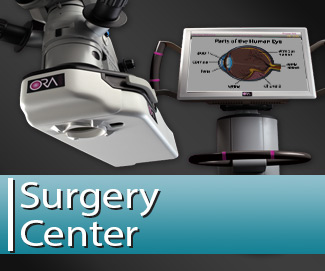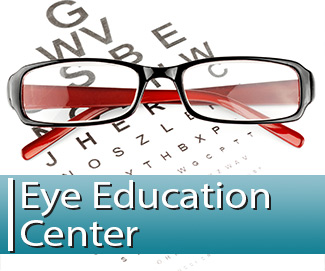Dry Eye Syndrome
Dry Eye Syndrome (DES) is an inflammatory condition that occurs when our eyes do not produce the right quantity – or quality – of tears. With nearly 20% of the U.S. population effected by this condition, it is quite common in the general population. The percentage can be even higher among people with certain autoimmune diseases and by environmental factors, such as living in a dry climate. Other influences factors that can cause dry eye syndrome include smoking, diabetes and menopause. Causes of DES include decreased tear production, poor tear film quality or excessive tear evaporation.
Prescription medications can also cause dry eye, including some high blood pressure medications, antihistamines, diuretics, antidepressants, anti-anxiety pills, sleeping pills and pain medications. Over-the-counter medications including some cold and allergy products, motion sickness remedies and sleep aids can also cause dry eye.
Age is also a factor. As we get older, the tiny glands in our eyelids (meibomian glands) produce less oil. This is especially common in middle age women. The oil from these glands keeps the natural tears on our eyes from evaporating. The decreased oil production simply allows our tears to evaporate too quickly, leaving the eye dry. In addition to aging, infection or clogging of the meibomian glands can also lead to dry eye.
Common symptoms of dry-eye are wide-ranging and can even include excessive watering, which is actually one of the most common patient complaints. Other commons symptoms include the feeling of a small spec of sand in your eye, grittiness, dryness, burning, blurred vision, tired eyes, redness and soreness. Your eyes may even produce a mucus discharge.
Dry or windy conditions, high altitude, air-conditioning, and smoke can aggravate dry eye. The same is true for excessive reading, using a computer, or watching TV. That’s because we blink less often when concentrating on such activities and decreased blinking allows the eye to dry out faster. Contact lenses can be a problem with dry eye.
Based on the level of your dry eye condition, our doctors will prescribe a custom treatment plan for short and long-term relief. In many cases, this may include a regime of oral antibiotics, medicated ophthalmic drops or artificial tears. In more severe cases, these therapies may not alleviate symptoms and require additional treatment options. Dry eye can be disabling for some patients and can even cause sight-threatening corneal complications.
Artificial tears are eye drops used to lubricate dry eyes and help maintain moisture on the outer surface of your eyes. They are commonly used to treat dry eyes that result from aging, certain medications, a particular medical condition, eye surgery or environmental factors, such as smokey or windy conditions. They are available without a prescription and there is not a single brand of artificial tears that works best for every form of dry eyes. These artificial tears often come in multidose bottles and contain chemicals that discourage bacterial growth once the container is opened. The preservatives may irritate your eyes, especially if you have moderate or severe dry eyes. Preservative-free artificial tears contain fewer additives and are generally recommended if you apply artificial tears more than four times a day. Preservative-free products come in single-dose vials.
In addition to providing lubricating moisture, some artificial tears contain electrolytes, such as potassium and bicarbonate. These additives may promote healing of the surface of the eyes. Artificial tears may also contain thickening agents, which keep the solution on the surface of your eyes longer.
For many patients, dry eye due to inflammation on the surface of your eye can be effectively controlled with prescription eyedrops that contain cyclosporine. This immune-suppressing medication is marketed under the tradename Restasis. It is currently the only prescription eye drop to help increase the eyes’ natural ability to increase tear production. Restasis is most commonly used in patients with chronic dry eye who previously experienced only temporary relief from artificial tears.
During the past decade, the ophthalmic industry has increased research into vitamins and other nutritional supplements used to treat dry eye. As a result, some eye centers are now able to confidently recommend specific vitamins and other nutritional supplements to aid in the treatment of dry eye pain. This is the based on the research and findings we have seen in our industry in recent years.
A common and productive technique involves the use of Punctal Plugs, which our doctors can easily insert into the lower or upper punctum, or both. By temporarily (or permanently) closing off the small funnel-like drain hole found in the upper and lower eyelids, the eyes can make better and longer lasting use of the small amount of lubricating drops it produces. There are numerous types of punctal plugs with varying uses and properties depending on the type of materials from which they are made. The most common type of plugs are divided into two groups: temporary collagen plugs placed at the top of the puncta and a more permanent plug inserted into the canaliculus.
In extreme cases where malfunction of lids or tear film, nerve damage, corneal infection and chronic inflammation could lead to defects and other dry-eye related issues on the cornea, a procedure known as AMT (Amniotic Membrane Transplantation) can be performed. If your physician feels this would be beneficial to you, he or she will refer you to a specialist.
YOUR TREATMENT PLAN
Here at Coastal Eye Care, we will customize a treatment plan based on your ocular history and specialized diagnostic testing performed here in the clinic. This includes measuring the rate of tear film production and checking the time is takes for tears to evaporate between blinks. Using special colored eye drops called fluorescein or Rose Bengal, we will also check for microscopic scratches on the front surface of your eye caused by dryness. Our goal is to provide long-lasting relief from dry eye and allow you to enjoy the best possible vision.


